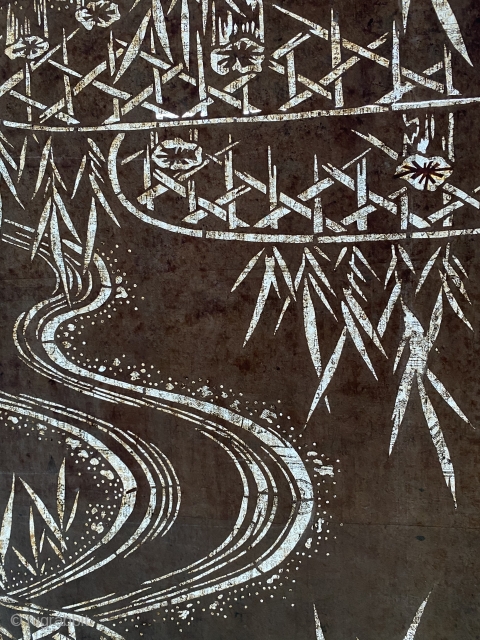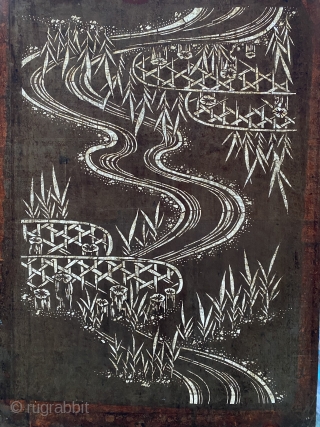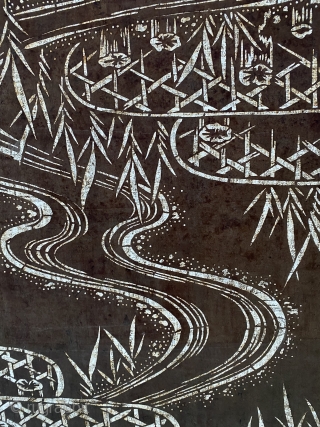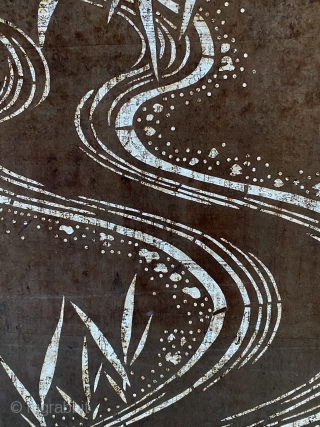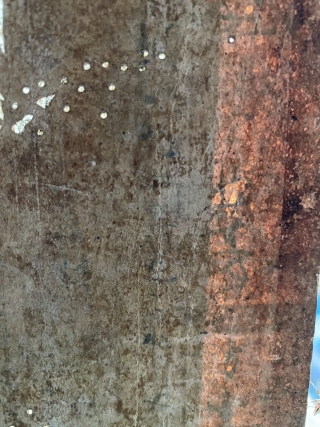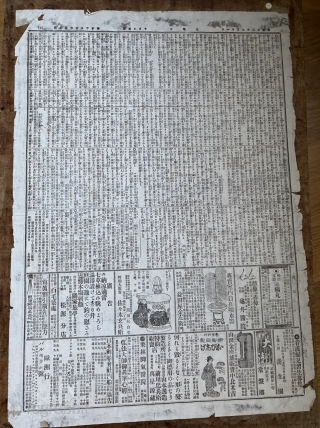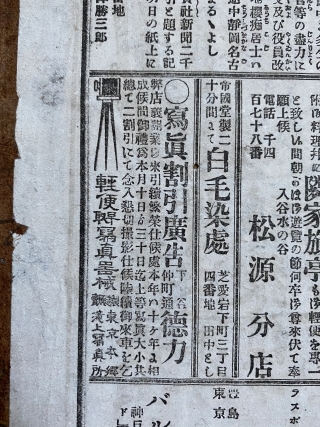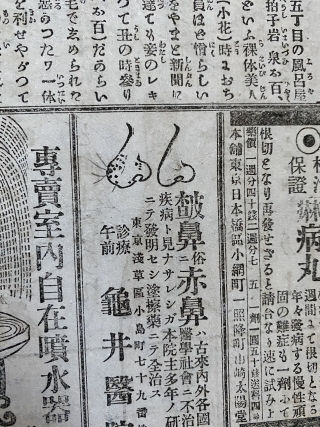Back
Very detailed Meiji period Katagami stencil used to resist dye a kimono. Conserved by backing with a period sheet of newspaper. Meticulously hand cut, one stencil would be used to dye one kimono. Rice paste was spread onto the stencil, preventing the dye from penetrating the fabric. i particularly like the underside, where the rice paste has reacted with the paper. Made from several layers of hand made washi paper, treated with persimmon juice, resulting in the gorgeous aubergine color. The paper gains an oily texture from the treatment. Truly ethereal, some of the best examples were preserved. a collectable piece of folk art, not the new piffle made for Etsy. Size 24.4 x 16.1 inch (62 x 41 cm). You may contact me at alexanderbakker@flairforflavor.com as the rugrabbit mailing system seems to be working intermittently. Best Alexander
price:
€ 120
- Home
- Antique Rugs by Region
- Category
- Profiles
- Post Items Free
- Albums
- Benaki Museum of Islamic Art
- Budapest: Ottoman Carpets
- Gulbenkian Museum
- Islamic Carpets. Brooklyn
- Islamic Textiles. Brooklyn
- Konya Museum: Rugs
- MKG, Hamburg
- MMA: Caucasian Carpets
- MMA: Mamluk Carpets
- MMA: Mughal Indian Carpets
- MMA: Ottoman Carpets
- MMA: Safavid Persian Carpets
- MMA: Turkmen Rugs
- McCoy Jones Kilims
- Ottoman textiles. Met
- Philadelphia Museum
- Rugs and Carpets: Berlin
- Seljuqs at the Met
- TIEM, Istanbul: Carpets
- V&A: Classical Carpets
- Vakiflar Carpets: Istanbul
- Baluch Rugs: Indianapolis
- Gallery Exhibitions
- Jaf an Exhibition
- Alberto Levi Gallery
- Andean Textile
- Christie's London: 2016
- Francesca Galloway
- HALI at 40
- ICOC Washington, DC 2018
- Jajims of the Shahsavan
- London Islamic Week April, 2018
- Mongolian Felts
- Navajo Rugs: JB Moore
- Persian Piled Weavings
- SF Tribal & Textile Art Show 2020
- SF Tribal 2019
- Sotheby's: C. Alexander
- Turkish Prayer Rugs
- Turkmen Main Carpets ICOC 2007








